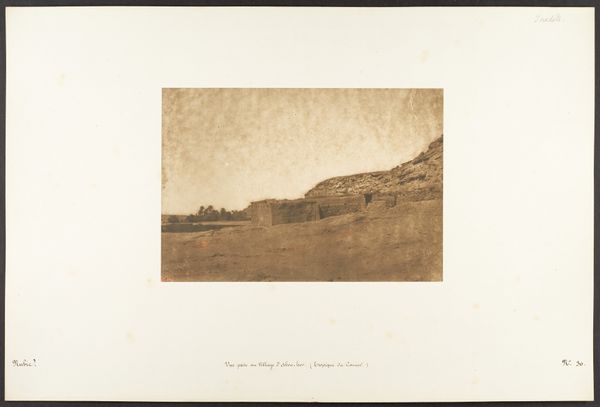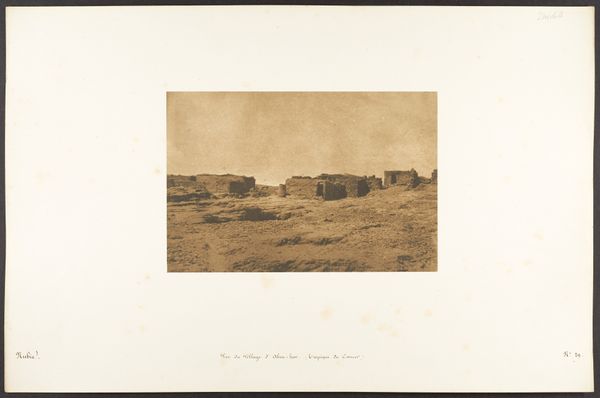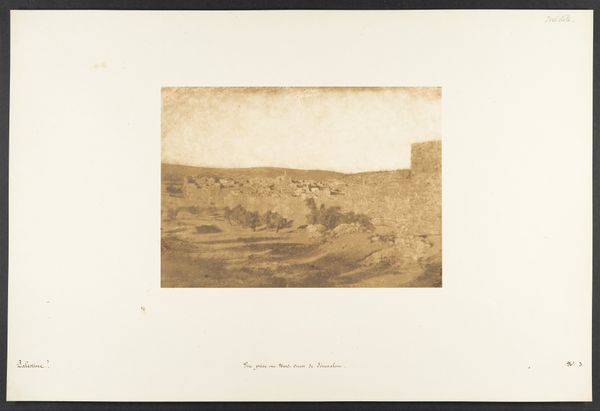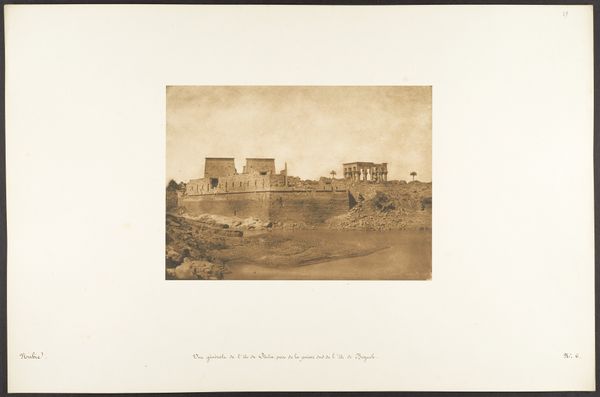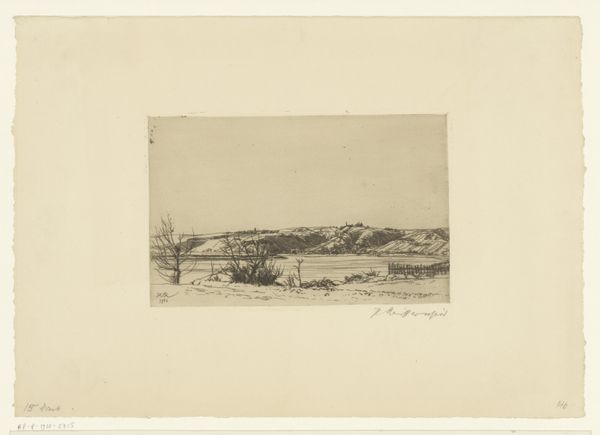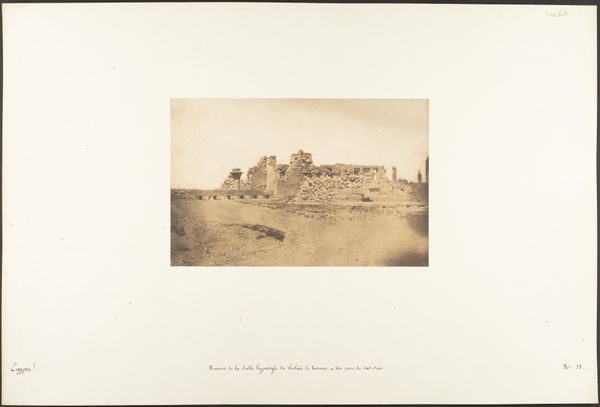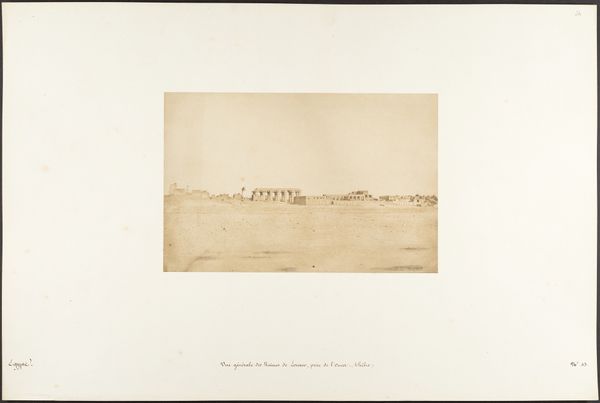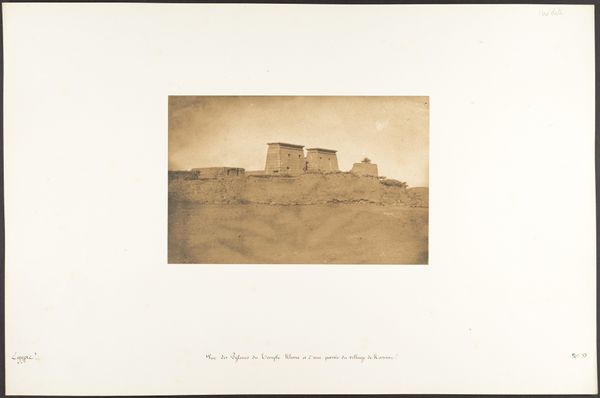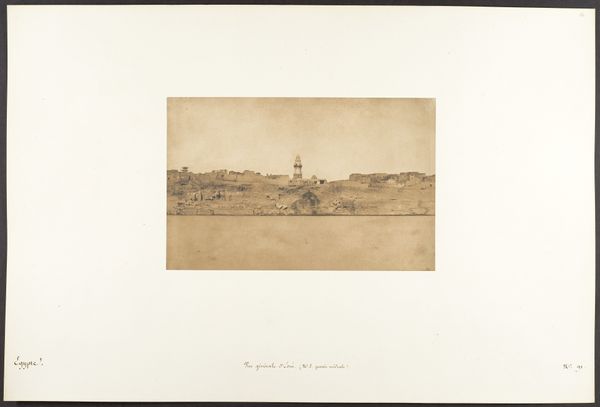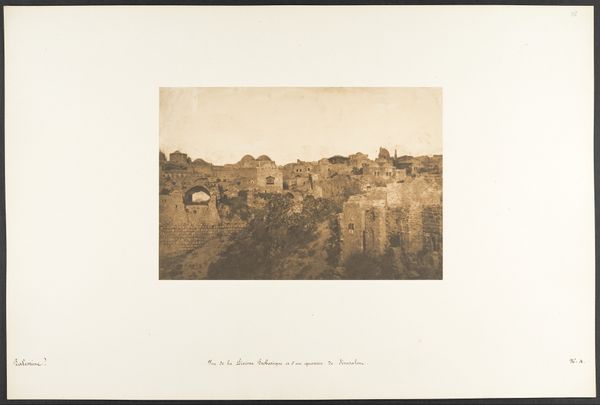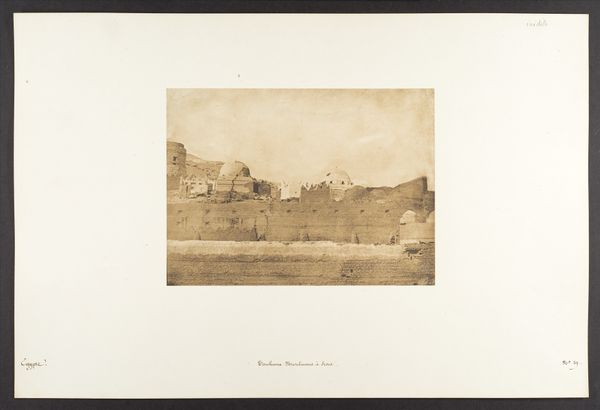
Vue d'une partie du village de Louxor, Thèbes 1849 - 1850
0:00
0:00
print, daguerreotype, photography
# print
#
landscape
#
daguerreotype
#
photography
Dimensions: Image: 5 5/8 × 8 1/16 in. (14.3 × 20.4 cm) Mount: 12 5/16 × 18 11/16 in. (31.2 × 47.5 cm)
Copyright: Public Domain
Maxime Du Camp captured this view of Luxor in Egypt using a Calotype sometime in the mid-nineteenth century. Du Camp was part of a wave of European artists and writers who traveled to the Middle East, often with state or institutional support. As we consider this image, we must ask, what was the public role of art and photography in this historical moment? In nineteenth-century France, there was growing enthusiasm for both imperial expansion and technological innovation. Photography served both interests, allowing the French to document, study and represent the people and places they sought to control. Egypt was of particular interest due to its rich history and proximity to Europe. The French state, keen to expand its cultural influence, helped fund archaeological digs, which in turn further fueled the desire for knowledge and control. To truly understand this image, and others like it, we must examine not only the visual details but also the social and institutional contexts in which they were produced and consumed.
Comments
No comments
Be the first to comment and join the conversation on the ultimate creative platform.
